The Garmin Edge 1040 Solar packs in a huge array of functionality with lots of extras so that you can use it as a training tool, as well as doing the basics of the best bike computers really well.
Solar charging leads to a huge battery life, so you can charge once and forget for multiple rides.
But the Edge 1040 Solar is a large, expensive unit that takes up a lot of space if you mount it on your bars, so the included out-front mount is pretty much a necessity to use.
Incorporating solar charging into the Edge 1040 makes a lot of sense. There’s a large screen area; unlike a watch, it’s always going to be facing upwards and cyclists are increasingly taking on long rides and multi-day bikepacking adventures where extended battery life is a definite plus.
Solar charging isn’t restricted to while you’re riding either. Position the Garmin Edge 1040 on a windowsill and it will quietly recharge itself even when switched off or on standby.
- Price of non-solar version: £520 / $600 / AU$1,000 / €600
Garmin Edge 1040 Solar specifications vs the competition

The Garmin Edge 1040 follows the Edge 1030 Plus in Garmin’s king-sized bike computer format.
At 59.3x117.6x20mm, it’s actually a few millimetres larger than the 1030 Plus.
It’s also significantly larger than the Garmin Edge 830, although it’s only a little taller than larger mid-format computers such as the Bryton Rider S800.
However, those extra few millimetres somehow make it seem in a size class of its own.

That’s particularly true if you try to mount it on your stem or bars using the standard mount, when it takes up a lot of space.
It looks a lot neater and feels more firmly attached to the bike on the sturdy plastic out-front mount included with the unit (there’s also a plastic mountain bike mount in the box with the Solar version).
Garmin also includes a black silicone case and a tether to help keep your computer a bit safer.
At 132g, the Edge 1040 is also pretty heavy, although that’s exactly the same weight as the smaller Hammerhead Karoo 2.
It’s got a solid, quality feel to its build though, with a metal half-turn attachment point, light ribbing on its underside and some bevelling to its sides to improve grip (although this also attracts dirt) and a metal finish to the two buttons on its bottom edge.
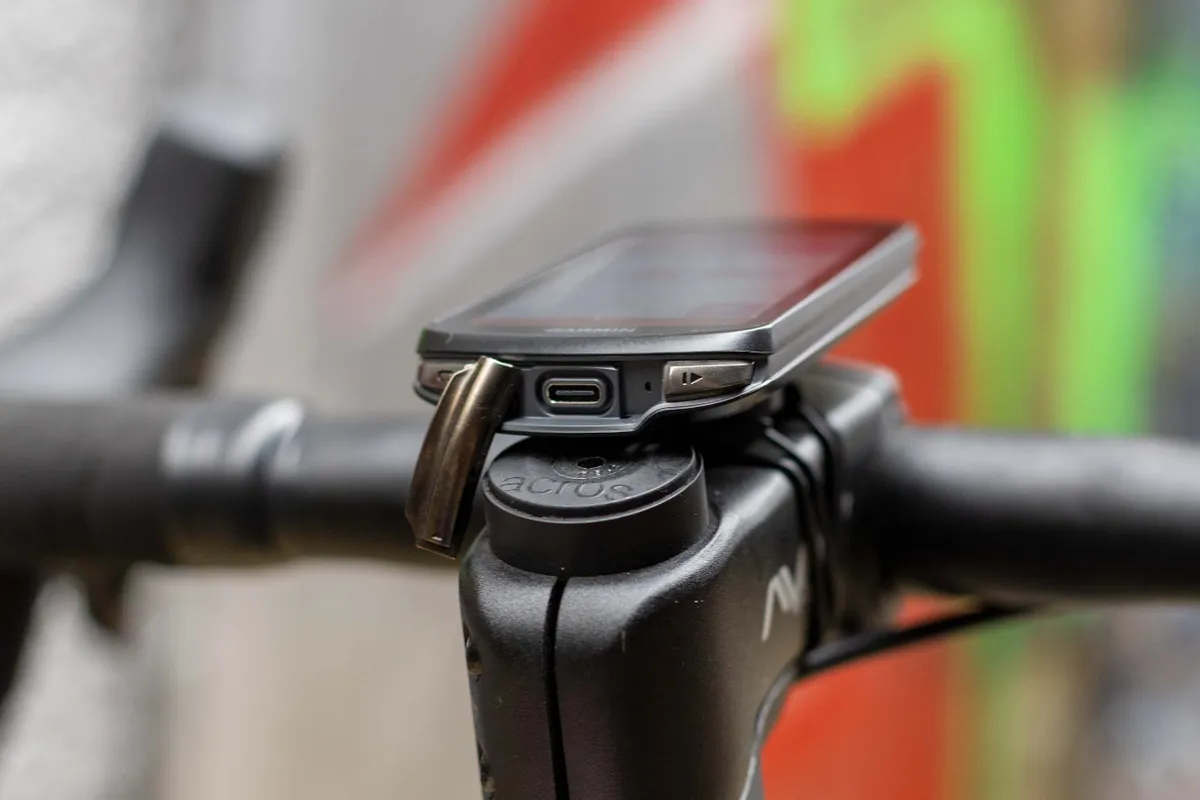
Sandwiched between the buttons is a metal-coated cover to the USB-C port – a nice upgrade to the Edge 1040 that helps reduce the recharge time of the chunky battery.
The display size of the Edge 1040 is the same as the Edge 1030 Plus at 88.9mm (3.5in) diagonal and it has the same 282x470 pixels resolution.
Again, that’s the largest display on the market and means you can get loads of data on each screen, including split views and a really good view of the included basemaps.
Garmin Edge 1040 Solar setup
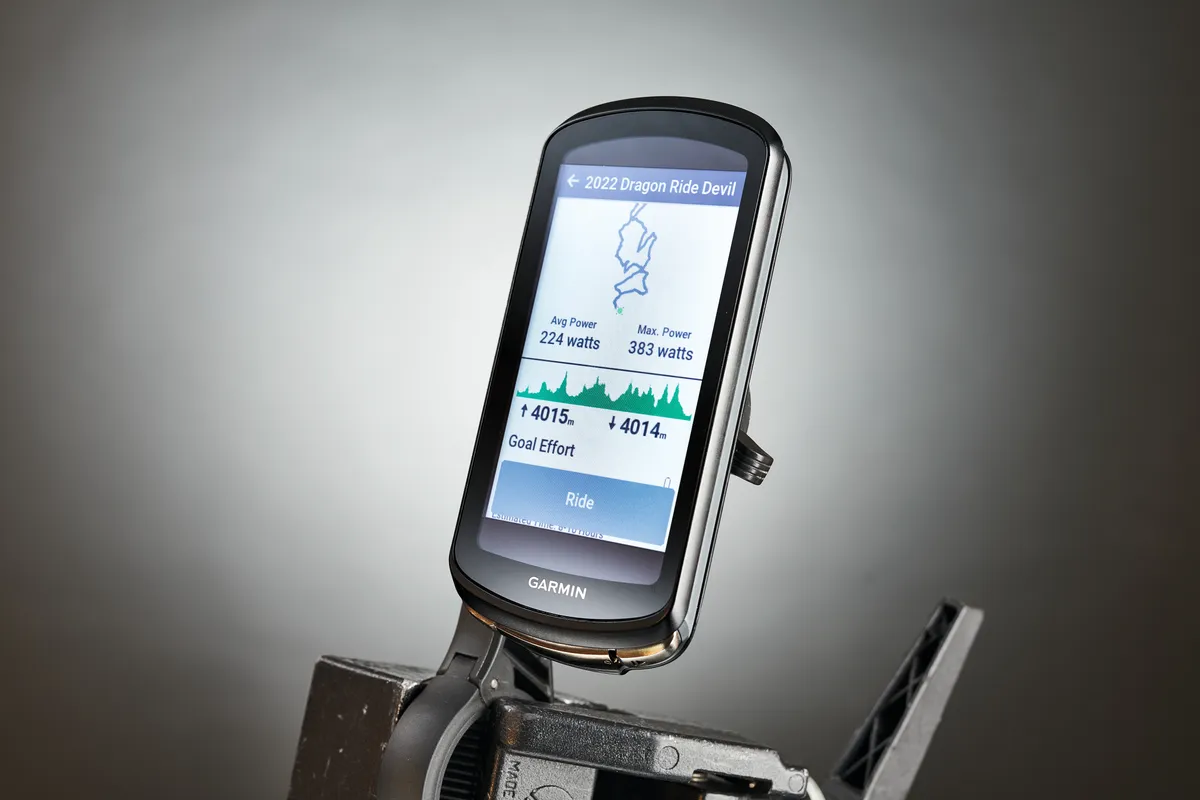
Garmin’s setup requires you to enter your language choice on the device. You’re then prompted to pair to the Garmin Connect phone app.
If you’ve got an existing Garmin bike computer, a couple of screens transfer your sensor links and rider profiles to the Edge 1040, so that everything is set up on the new computer as it was on your old one, saving a heap of time.
An on-device tutorial then guides you through the device’s features and you can add WiFi connections, set up emergency and Live Track contacts and select a training plan – or skip these steps. It’s all quick and intuitive.
Garmin Edge 1040 Solar ride data
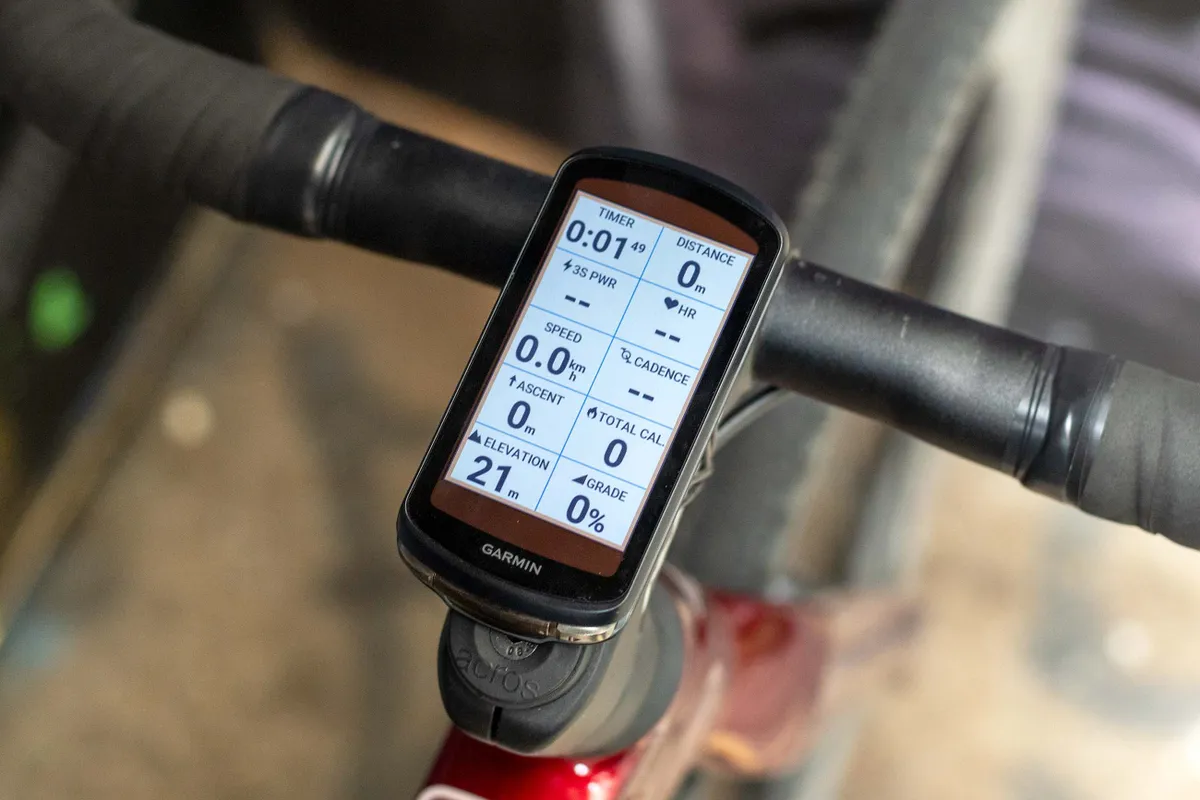
There’s a fairly standard playbook when you switch on most GPS units, where you’re presented with a screen to choose your ride type and maybe a route to follow and start riding.
That’s not how the Garmin Edge 1040 works.
Yes, you can do the above, but the majority of the home screen is taken up with 'Glances'.
This provides views of weather, history, your workout for the day if you’re following a training plan, and more.
As with the fields and data screens you see while you ride, it’s highly configurable so you can add, for example, your recovery time or remove a Glance you’re not using.
You tap the top section of the screen to get started with one of the configurable bike profiles, each of which can have different screen displays with different data. You can set up options such as alerts for sharp bends and when to eat or drink.
The screen is responsive enough that it’s easy to swipe between pages as you ride, although the relatively low contrast of the display and reflective screen surface can make reading the screen on sunny days a little difficult. A more matt screen, like that on the Wahoo Elemnt Roam or the Hammerhead Karoo 2, is easier to read.
Garmin Edge 1040 Solar mapping and navigation
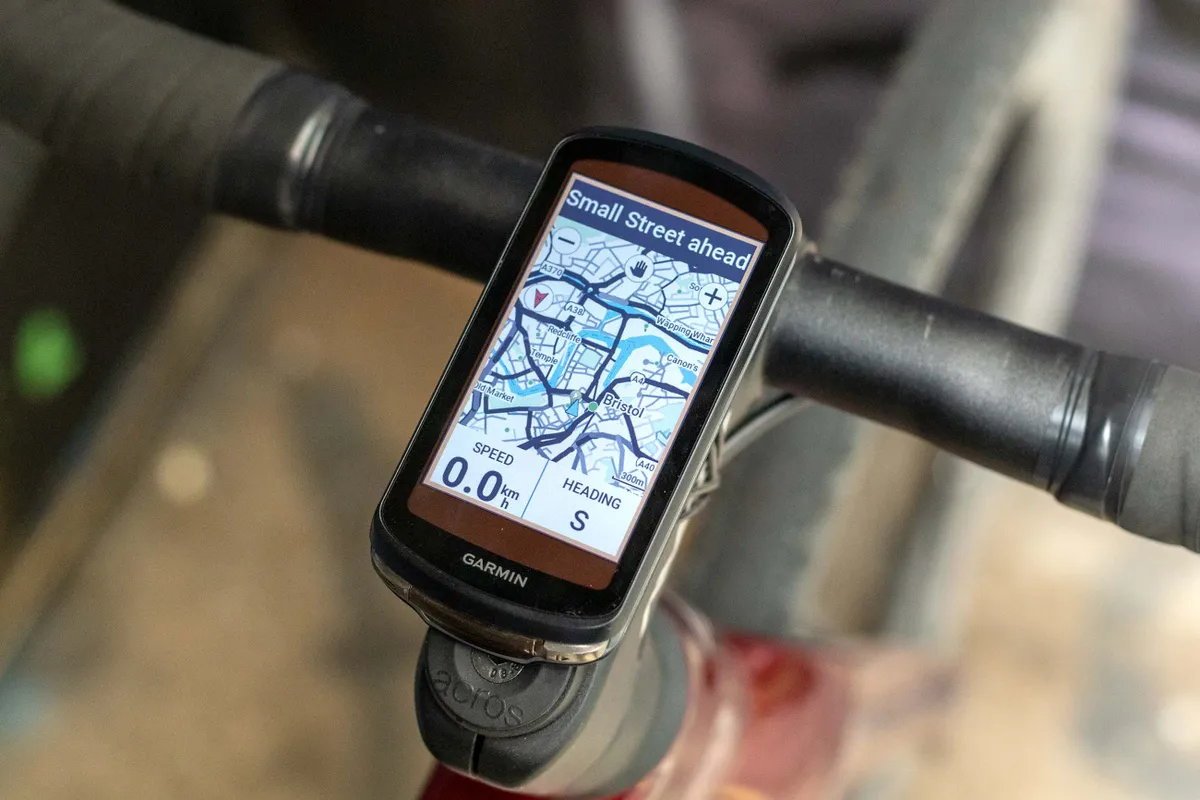
Garmin gives you great route planning both on-device and pre-ride via Garmin Connect. With a lot of users, Garmin has loads of info on where cyclists ride. This means you can set the Edge 1040 to use popularity routing so you don’t end up riding down a busy main road when there’s a parallel quiet route.
The route-planning functionality on Garmin Connect is easy to use and has a range of basemaps suitable both for road and off-road riders. Save the route and you can then flag it for download to the Edge 1040 next time you turn it on.
If you want to get technical and you have a power meter, Garmin will also create a Power Guide either on-device or in Garmin Connect indicating what power output you should aim for on different parts of your route. This is displayed as colour-coded effort levels along the route map.
If you’ve got a WiFi connection, your route and power guide will automatically be made available on device when you power up and, if you’ve got a Glance set up for Courses on the home screen the map will appear there, can be selected and you’ll get a prompt to navigate to its start.
Strangely, although you’re prompted to start recording, you can navigate the course without recording, as I found out a couple of times, losing a chunk of ride data before I realised.
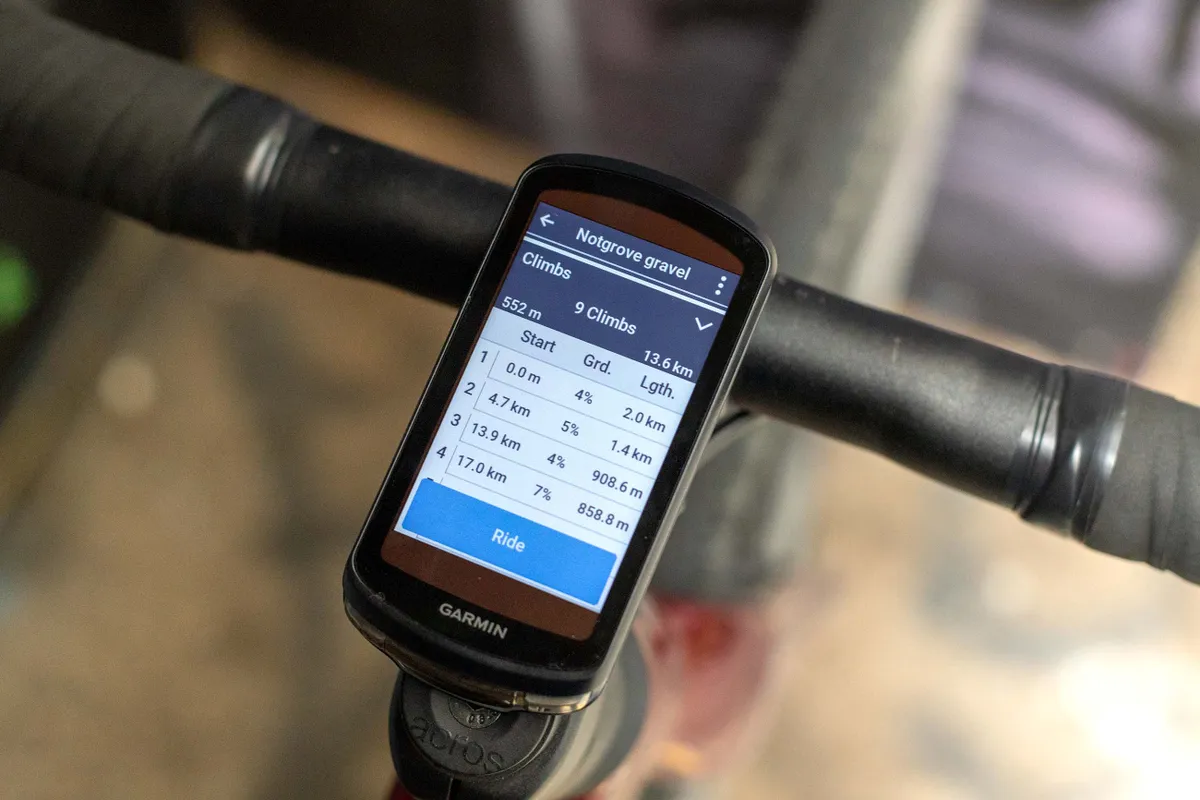
Dig deeper and the Edge 1040 will list out the climbs on your route, at what distance they occur and how steep and long they are. You even get advice on how tough the route is and its anaerobic and aerobic demands.
Garmin’s navigation is easy to follow, with audible prompts, instructions at the top of the screen and a trace on the basemap, which is itself configurable. You also get a mini-display of the upcoming profile, so you can prepare for changes in gradient.
When you hit a hill, like other recent Garmin devices, the Edge 1040 will bring up the ClimbPro feature, giving you a colour-coded gradient breakdown, current gradient and distance to the top. Unlike the Hammerhead Karoo 2, which does this on the fly, you need to be riding a course for Garmin to activate ClimbPro.
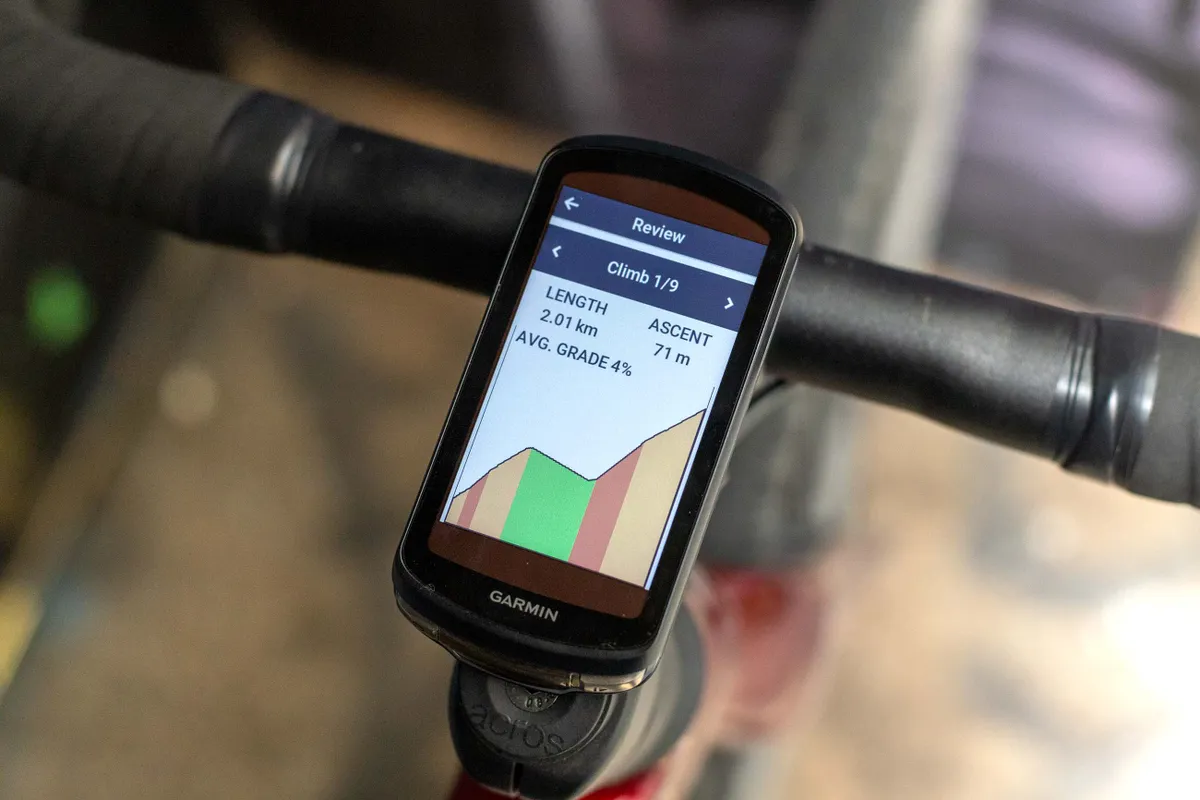
Garmin’s on-device rerouting if you go astray works fine and will guide you onto your course further along if you don’t make the U-turn advised when you get an alert that you’ve gone off course.
Hit the physical start/stop button at the end of a ride, press save on screen, and the Edge data will be automatically uploaded to Garmin Connect and to any other apps, such as Strava, that you’ve linked up.
Garmin Edge 1040 Solar battery life
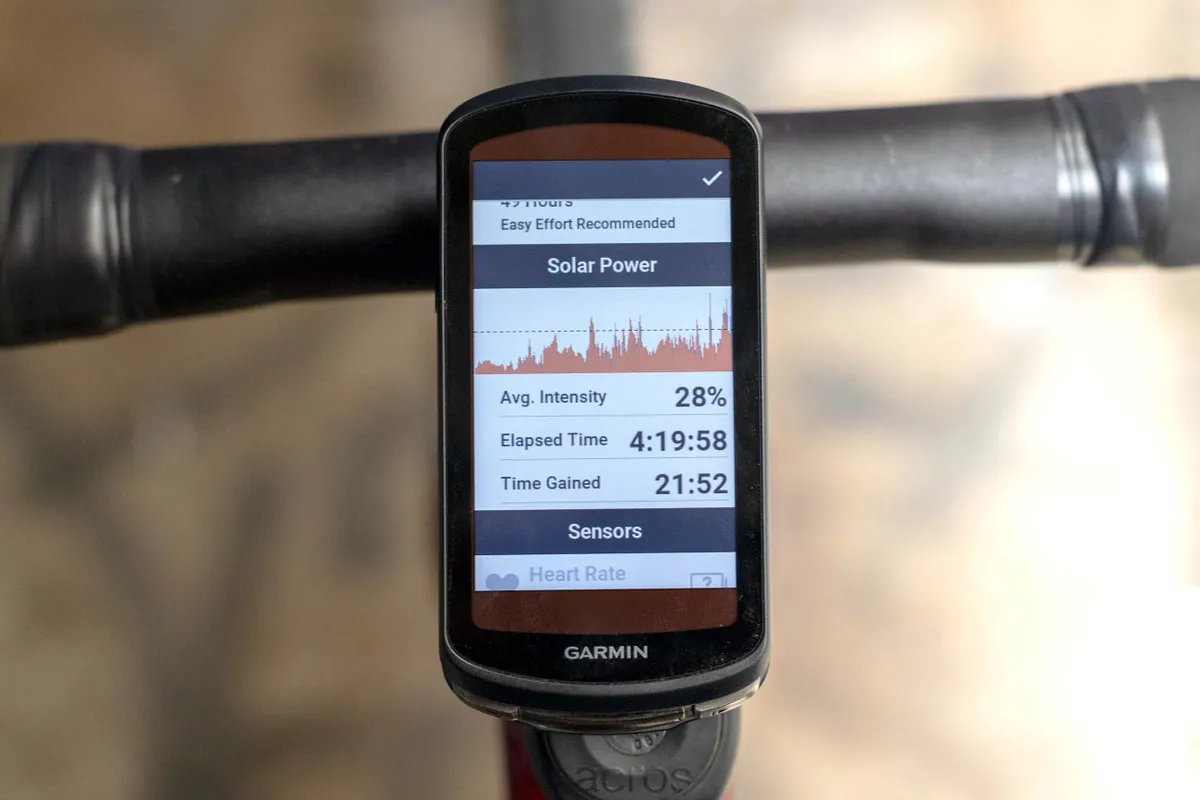
Battery life is the Edge 1040’s major trump card, particularly with the Solar version. Garmin claims 45 hours, comfortably beating anything else on the market, where the 24 hours of the Edge 1030 Plus was the previous best. In Battery Saver mode, that goes up to 100 hours.
Not everyone’s going to need that sort of staying power, but Garmin says even the non-solar Edge 1040 will last for 35 hours.
Where the extra longevity of the Edge 1040 Solar is useful is for those who head off on multi-day adventures, meaning there’s no need to carry a power bank for their bike computer (although their phone may require one nevertheless) or to hunt for a USB port at every stop.
It also removes the hassle if you’re off on a training camp, for example, and want to be able to ride multiple days without worrying about recharging.
I charged the device once and, leaving it on a sunny desk between rides, it stayed charged to over 50 per cent capacity over the period I was using it.
Helpfully, once you finish a ride, Garmin gives you a stat for the solar charge you’ve gained. At the peak of UK summer on rides that were a mix of full sun and shade, I was pretty consistently gaining around 10 minutes per hour of extra charge.
Garmin Edge 1040 Solar post-ride features

Garmin continues to excel with its post-ride analysis options on Garmin Connect. Finish your ride and the Edge 1040 will automatically upload your progress to Connect via a WiFi internet connection or via Bluetooth to your phone and using that device’s internet connection.
There’s then tons of data to pour over, including the usual speed and distance stats and heart rate and power analysis, if you have the right sensors hooked up. There’s also Garmin’s own version of Strava segments. Although they’re different from Strava’s, they’re potentially useful if you want to plot your own performance across different rides.
As you’d expect, you can then push out your data to the best cycling apps, such as Strava or TrainingPeaks, but a lot of the functionality you’d pay for with other platforms comes for free in Garmin Connect.
Garmin Connect integrates your fitness data really well across multiple devices. So if you have a Garmin Fenix smartwatch, for example, your ride data recorded on a Garmin cycling computer is integrated with 24/7 fitness data into an overall view of your exercise load, fitness and Body Battery, telling you how hard to exercise and when to rest up.It’s similar to what you can get with paid subscriptions such as Whoop, but free from Garmin. Likewise, Garmin gives you free training plans and analysis to target specific events that you’d pay for with TrainingPeaks or Wahoo SYSTM.
You can do pretty much everything you’d want without straying outside Garmin’s ecosystem.
Garmin Edge 1040 solar bottom line

Adding solar charging to the Edge 1040 makes for extremely long battery life, so you’re unlikely to run out of juice even over multiple days riding.
There’s also all the functionality you’re ever likely to need, and then more, packed in, so it will serve you well whatever type of riding you’re into.
The downsides are that the Edge 1040 is a large device, a bit heavier than most bike computers and comes with a hefty price tag to match.
But if you want a bike computer that will do it all for you, the Garmin Edge 1040 is the one.
Product
| Brand | Garmin |
| Price | A$1300.00, €750.00, £630.00, $750.00 |
| Weight | 132g |
Features
| Rechargeable battery | yes |
| Screen type | touchscreen |
| Connectivity | bluetooth |
| Features | Memory: 64GB Constellations: GPS, GLONASS, Multiband GNSS Charging: USB C |
| Dimensions | 117.6mm tall x 59.3mm wide x 20.0mm deep |
| Battery life | 45 hours claimed |
| Water resistance | IPX7 |
| Screen dimensions | 88.9mm (3.5”) |
| Display resolution | 282 x 470 pixels |
